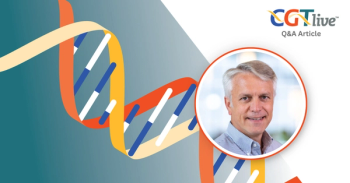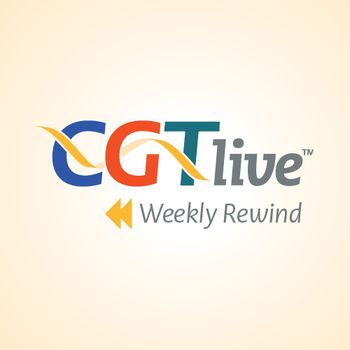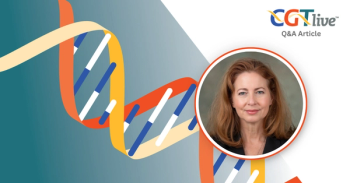
Omotayo Fasan, MBBS, MRCP, DTM&H, on Evaluating CAR T-Cell Therapy GLPG5101 in R/R NHL
The head of the clinical development program at Galapagos discussed the company's data presented at EHA's 2025 Congress.
At
Fasan discussed the design of GLPG5101 and went over the key data points and their implications. He also touched on future plans for the therapy and other cell therapy products in the company's pipeline.
CGTLive: Can you give some background context about Galapagos’ EHA presentation?
Omotayo Fasan, MRCP, DTM&H, MBBS: At EHA 2025, Galapagos is presenting new data from its ATALANTA-1 study, an ongoing phase 1/2 clinical trial of GLPG5101, a CD19-directed CAR-T cell therapy candidate for relapsed/refractory nonHodgkin lymphoma (r/r NHL). This therapy is manufactured using Galapagos’ innovative decentralized platform, which enables delivery of fresh, stem-like early memory T-cells in a median vein-to-vein time of just 7 days.
This study represents a breakthrough in operationalizing decentralized manufacturing, making fresh CAR-T therapy more accessible and feasible across multiple sites and lymphoma subtypes. The EHA presentation demonstrates the potential of this novel “fresh and fast” approach with a favorable safety profile. The low incidence of high-grade toxicities makes such a therapy ideal for development as an out-patient therapy, meaning less patients are hospitalized to treat side-effects and lower costs for the healthcare system.
What are some of the key findings Galapagos is presenting at EHA this year?
Key highlights from the EHA presentation include:
- High Fresh Cell Utilization: 95% of patients received fresh CAR-T products, avoiding cryopreservation, which is associated with reduced toxicity, good expansion, and an early memory phenotype cell profile.
- Short Vein-to-Vein Time: Approximately 9 out of 10 patients achieved infusion within 7 days of leukapheresis, thereby avoiding the need for cytotoxic bridging therapy —significantly faster than the 4–6 weeks typical of current CAR-T therapies.
- Favorable Safety Profile: Only 1 grade 3 cytokine release syndrome (CRS) and 1 grade 3 immune effector cell-associated neurotoxicity syndrome (ICANS) were reported, with most grade ≥3 adverse events being hematologic and expected.
- Low Attrition: Just 5% of patients dropped out prior to infusion, outperforming industry benchmarks where dropout ranges from 10–30%.
- Robust In Vivo Expansion: Consistent expansion of CAR-T cells and maintenance of a stem-like early memory phenotype across all tumor types and dose levels.
How would you summarize the big-picture implications that doctors and the broader healthcare community should take away from these results?
Galapagos’ EHA results suggest a meaningful advance in CAR-T therapy delivery and safety. The decentralized, 7-day manufacturing approach demonstrates that fresh, early memory CAR-T cells can be reliably delivered in a decentralized manner, enhancing physician confidence and expanding treatment access—especially for patients too fragile to wait weeks for traditional CAR-T production.
The potential benefits to patients include:
- Rapid vein-to-vein time of 7 days, potentially affording more patients a CAR-T option.
- Minimized attrition rates and postleukapheresis dropout rates.
- Reduced toxicity and high-grade complications.
- Elimination of the need for cytotoxic bridging therapy.
- Enhanced outcomes and experiences for both patients and providers by offering a faster, scalable and more accessible therapeutic option.
What are the next steps for this research? Are there any challenges that still need to be addressed?
Galapagos plans to initiate pivotal development for GLPG5101 in 2026, starting with mantle cell lymphoma (MCL) as the lead indication, and subsequently following with multiple phase 3 indications as the phase 1/2 cohorts fully enroll. We are aiming for regulatory submissions starting in 2028. Preparations include expanding decentralized manufacturing units (DMUs) across Europe and the US and onboarding additional clinical sites.
Is there anything not covered by the previous questions that you want to share with our audience of doctors and healthcare professionals?
Beyond GLPG5101 in 8 relapsed/refractory B-cell malignancies, Galapagos is developing a broader pipeline, including GLPG5301, an antiBCMA CAR-T for r/r multiple myeloma (PAPILIO-1 phase 1/2 study) and a preclinical T-cell therapy program (uza-cel) in MAGE-A4 positive solid tumors such as Head & Neck cancer, in partnership with Adaptimmune. This platform is not just a delivery mechanism but a transformative ecosystem of 3 key components—integrating an end-to-end xCellit® workflow and monitoring software system, a decentralized, functionally closed, automated manufacturing platform for cell therapies (using Lonza’s Cocoon®), and proprietary quality control and product release processes.
The data from ATALANTA-1 of GLPG5101 demonstrate the potential for our lead CAR-T product candidate—and it also suggest the strong potential of decentralized, fast and fresh cell therapy approaches. By reducing barriers to access and expanding the eligible patient population, Galapagos is working to set a new standard in how advanced personalized cell therapies can be delivered reliably, rapidly, and globally.
This transcript has been edited for clarity.
Newsletter
Stay at the forefront of cutting-edge science with CGT—your direct line to expert insights, breakthrough data, and real-time coverage of the latest advancements in cell and gene therapy.
















































